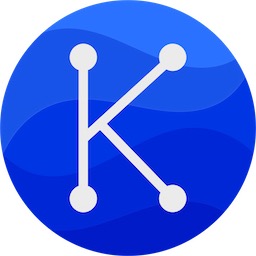Information for developers¶
(GitHub Workflow)¶
Kymatio implements the scattering transform for different frontends (currently numpy, torch, tensorflow),
each of which have one or more corresponding backends. This way, the generic scattering algorithm can be written in an
architecture-agnostic manner, since all low-level operations are relegated to the backend, and high-level operations
specific to an API are relegated to the frontend.
To make sure that a future pull request (PR) will pass the jenkins and travis tests, please try our package on the
unit tests, the speed as well as the documentation. You might need to install auxiliary libraries via the
requirements_optional.txt.
For development purposes, you might need to install the package via:
git clone https://github.com/kymatio/kymatio.git
git checkout origin/dev
cd kymatio
python setup.py develop
Please refer to https://www.atlassian.com/git/tutorials/comparing-workflows/gitflow-workflow for more recommendations.
Backend to frontend: core of the algorithm¶
Common to the 1D, 2D and 3D scattering transform routines are four low-level functions which must be optimized:
Fast Fourier transform (FFT) and its inverse (iFFT)
Subsampling in the Fourier domain (periodization)
Non-linearity (modulus in 1D and 2D, quadratic mean in 3D)
Dotwise complex multiplication (
cdgmm)Padding and unpadding
Checking unit tests¶
For running all the unit tests and avoiding bugs, please first install the latest versions of numpy, tensorflow,
torch, cupy, scikit-cuda. Then, run (in the root directory):
pytest
If all the tests pass, you may submit your pull request as explained below. A speed-test is welcome as well.
Checking speed¶
For checking the speed of the actual HEAD of the repository, install first ASV and then you can run the ASV benchmarks on various architectures and for various config files (one config file per backend and device) via:
cd benchmarks
asv run --config asv_torch.conf.json
You can visualize the results via (one can use either show, publish or preview):
cd benchmarks
asv show --config asv_torch.conf.json
For trying a specific range of commits from XXXXXXXXX to YYYYYYYYY, you can also do:
cd benchmarks
asv run YYYYYYYYY..XXXXXXXXX --config asv_numpy.conf.json
It is also possible to run a specific benchmark via:
cd benchmarks
asv run --bench torch_scattering1d --config asv_torch.conf.json
In order to run the CUDA benchmarks, for (e.g., torch) use:
cd benchmarks
asv run --config asv_torch_cuda.conf.json --launch-method spawn
Note that here the attribute spawn is necessary because several packages (e.g., pytorch) do not supported forked subprocess methods. Use -e to display potential errors.
Checking documentation¶
For checking the documentation, please run the following commands, that will built it through sphinx:
cd doc
make clean
make html
Proposing a pull request¶
Each PR must be documented using docstrings, illustrated with an example and must pass the unit tests. Please check the PRs already merged on the GitHub repository if you need an example of a good PR.

